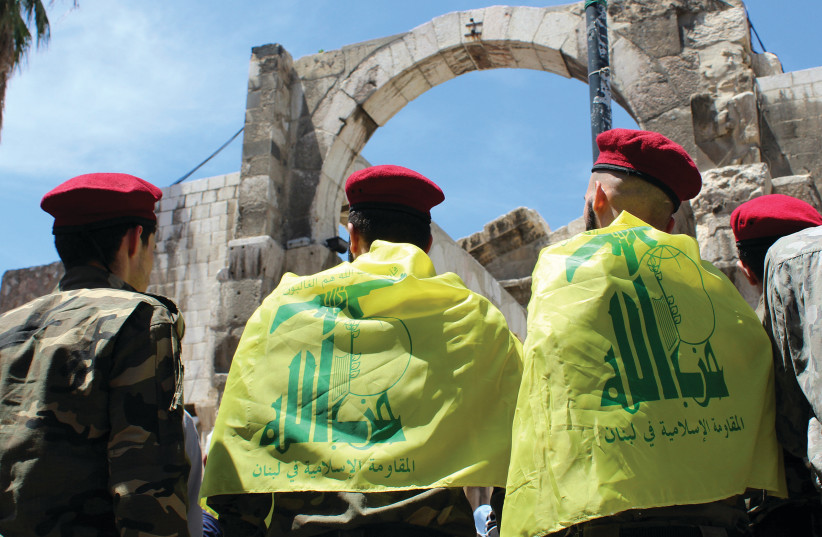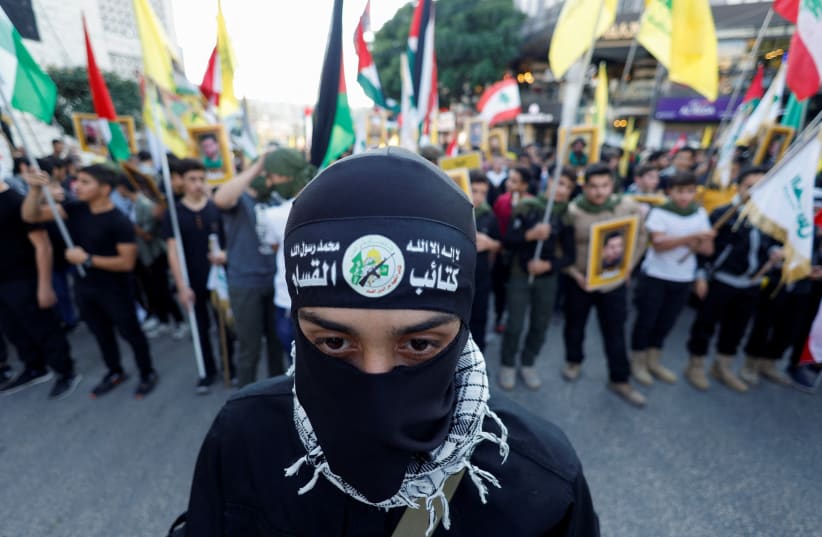Israel is focused on defeating Hamas in Gaza. The Hamas threat has to be defeated due to the extensive crimes the group committed on October 7. Leaving any part of Hamas intact would send a message to the region that Israel is not willing or able to destroy a group that massacred 1,200 people in Israel and still holds 138 hostages.
However, a larger shadow continues to fall over northern Israel. The Hezbollah threat in the North not only continues to exist but there is a lack of clarity on how to remove it from the border.
After the Hamas attack on October 7, it was clear that Israel could face a multi-front war, if Hezbollah chose to attack as well. In addition, Iran has proxies in Syria and Iraq and backs the Houthis in Yemen. Tehran has also sought to inflame the West Bank via support for Palestinian Islamic Jihad. Iran sees all these groups as a series of fronts against Israel and it seeks to “unify” them.
This is something Iran has worked on for years. Today this threat has been manifested through Houthi attacks on ships in the Red Sea as well as near-daily attacks by Hezbollah and even threats from Iranian-backed militias in Syria. Israel’s Chief of Staff Lt.-Gen. Herzi HaLevi also said this week that Israel has detained 1,200 Hamas operatives in the West Bank since October 7.
This week, IDF spokesperson R.-Adm. Daniel Hagari said that the Israel Air Force “attacked a series of Hezbollah targets in southern Lebanon today, including posts and military sites where weapons were stored and terrorists of the organization operated.” The military has sought to “improve” the situation in the North. “We are working on this around the clock and attacked in Lebanon today for this purpose,” he said.


Hezbollah threat persists, despite losses
Hezbollah has suffered losses, with up to 100 men injured and killed. But the Lebanese-based terrorist group continues its threats daily. It’s not clear if Iran wants it to do more. During the pause in fighting in Gaza, Hezbollah also paused its attacks. This seems to show that the group would accept “quiet for quiet.”
However, we noted in a report on December 6 that Defense Minister Yoav Gallant met with northern community authorities from evacuated communities and asserted that Hezbollah would need to choose between a negotiated process and backing away from Israel’s border, or the IDF would take action. “There is one possibility that we will reach a different deal… with international negotiators that they will respect our presence here," he said: "The second possibility is that we will be forced to do it by force.”
There was also discussion this week that some kind of new border deal could take place, backed by the US. Washington helped broker a maritime deal with Lebanon in 2022. However, the deal led to increased provocations by Hezbollah, which has not been deterred. In fact, with winter coming, it’s possible that the terrorist group even feels empowered after two months of low-level conflict.
There’s no evidence that the Lebanese government or the international community can get the organization to leave the border. Hezbollah thrives and profits by occupying southern Lebanon. After the 2006 war, it wasn‘t supposed to restock its arsenal and take over southern Lebanon, but it did.
The international community has done the same thing with Hezbollah that it did with Hamas: essentially enabling these illegally armed groups to grow into terror armies. Many countries and agendas are served by these groups.
Iran is one example, but Hamas is also hosted by Qatar; Russia has not condemned Hamas and doesn’t seem to mind Hezbollah. China, which also works with Iran and Russia, doesn’t seem to want to invest in stability in the region by condemning these groups. It appears that many anti-Western countries see Hamas, Hezbollah, and other groups as useful against the West.
Iran exploits this to get countries to see the Gaza war as a regional conflict against Israel and the US. The Houthis have also increased their attacks and are being appeased. This means that the chances of Hezbollah leaving the border appear slim. At the same time, Israel doesn’t want to accept a situation where the terrorist group sits on the border and threatens to commit an attack similar to October 7.
No good options
There are no good options here. The Iranian ability to push its proxies closer to Israel over the last decade has been successful. Despite Israel waging the "Campaign Between the Wars" in Syria to prevent Iranian entrenchment, Iran has moved other pawns across the board. One pawn is Palestinian Islamic Jihad in Jenin. Another was Hamas in Gaza. Others include the Houthis in Yemen and militias in Syria.
Some of these pawns are now so large in terms of threats, that they have reached the far border of the chess board and have become rooks. Israel may have been focused on “third circle” threats or “depth” in the region—including the Abraham Accords and other issues—but Iran was focusing on the meat and potatoes of terrorism.
Iran’s proxies move slowly and continuously forward. They erode states and carve out areas of chaos and destabilization. For instance, the Palestinian Authority in the West Bank would be challenged by administering Gaza, if it can’t even get a hold of the chaos in Jenin.
In essence, this is how the North of Israel remembers its role in the conflict in Gaza. While Israel must defeat Hamas, the real threat remains in the North and other areas.
